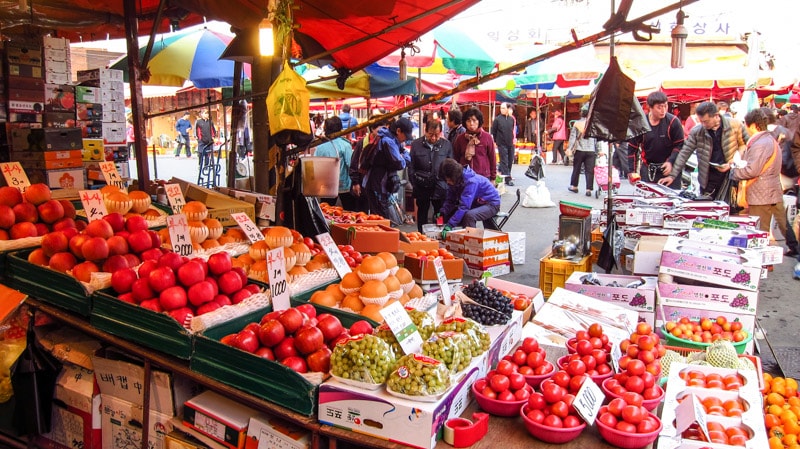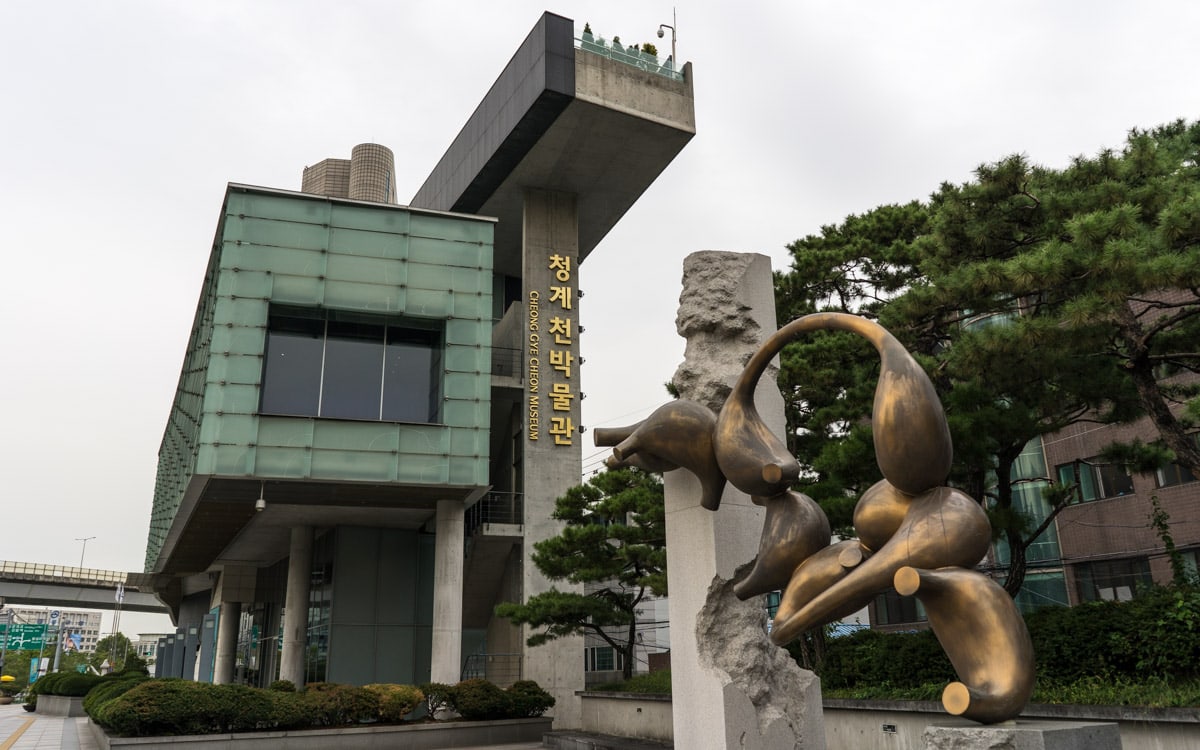
Located on the eastern part of the Cheonggyecheon Stream, not frequently visited by tourists, is the little known but interesting Cheonggyecheon Museum. This museum opened on September 26, 2005. The purpose of the museum is to preserve the history of the stream and commemorate the restoration of the waterway that was once the location of an elevated highway.
Cheonggyecheon is a major stream that has flowed through this area long before Seoul became the capital city of the Joseon Dynasty. During this period, the stream was refurbished multiple times by the order of the king and used as a drainage system. Many bridges were also built during this period.
During the Japanese colonization of Korea (1910-1945), the stream was unsuccessfully covered up. After the Korean War (1950-1953), many poor people made their homes on the banks of the stream.
Not surprisingly, the area surrounding the stream became an eyesore for the city. The government evicted the people who lived here, covered up the stream in concrete, and built an elevated highway. For thirty years, the history and memory of the stream that once flowed here was gone.
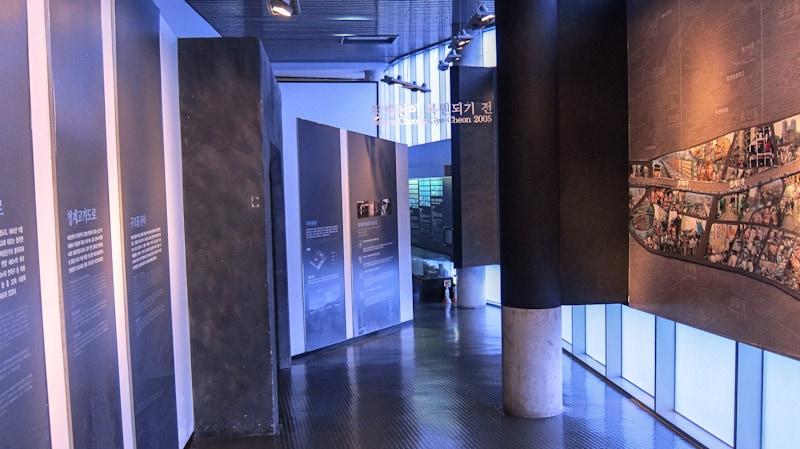
In July 2003, work began to remove the highway and restore the stream as it was many years ago. Restoration work was completed a couple years later in September 2005 at a cost of 386 billion won (298 million USD).
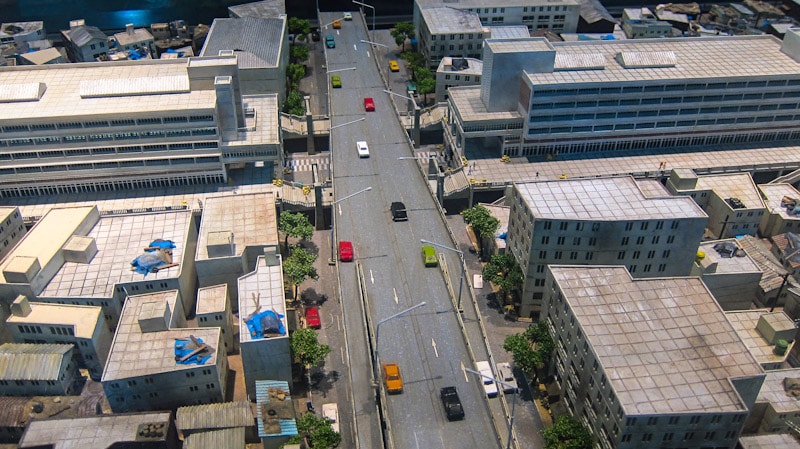
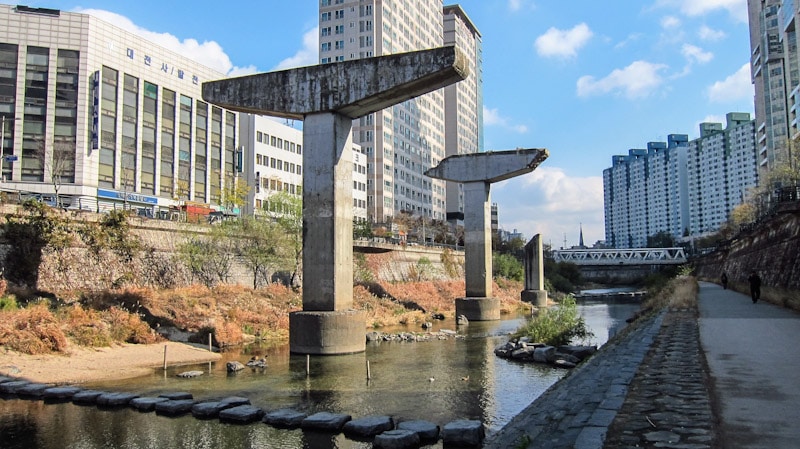
As you arrive at the museum, notice how the modern façade of the exterior of the building features a long, flowing glass structure that resembles water flowing down the stream.
The entrance to the museum is on the fourth floor. As you walk through the museum, you will descend down ramps to lower floors as you pass through permanent exhibits. These exhibits describe the history and cultural importance of the stream through its past, present, and future.
There is also often special exhibits, an auditorium used for cultural performances, and an education room for children at the museum.
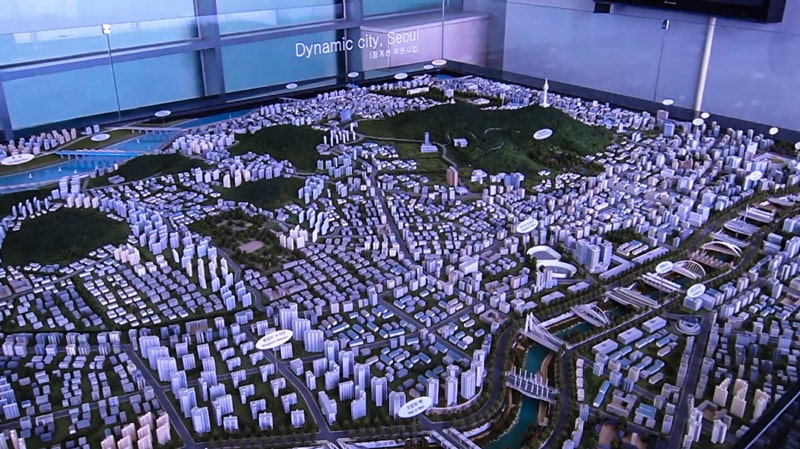
At the entrance of the museum, a miniature model of the city shows the geography of the stream and the surrounding areas of the city.
From here, models show what life was like for those living on the banks of the stream after the Joseon Dynasty and after the Korean War. During these periods, the stream became an eyesore as many poverty stricken people made their homes here. The models also show how construction works covered up the stream in many areas and turned the stream into an elevated highway.
The next few exhibits show how the area was covered up with concrete and the highway that was built upon it. Photographs of the elevated highway and the city can be seen. At the time, the highway was a proud symbol of the industrialization of Seoul after the Korean War. This highway ran through the heart of Seoul for 8.4 kilometers (5.2 miles). Over time, the highway began to age and fall apart to a point where safety was a concern.
The last exhibits on this floor describe the nature of the area. This includes information about plants and animals that reside here, how the restoration project was carried out by the government, and what the future holds for the stream, the city, and the surrounding areas.
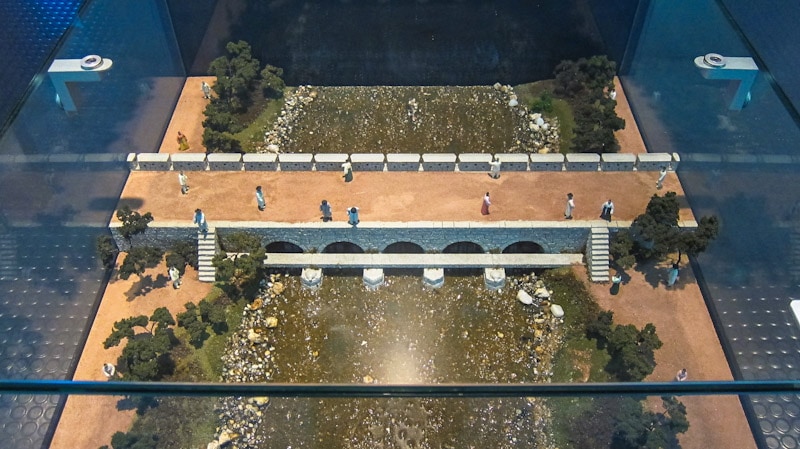
As you walk down the ramp to the next floor, you will encounter more exhibits. These exhibits explain the history and importance of the stream during the beginning of the Joseon Dynasty. At this time, the city was known as Hanyang. You can view old maps and other documents related to the history of the stream from the Joseon Dynasty all the way through the Japanese colonial period.
Visitors can also watch a five minute video that will give them a bird’s eye, or as they call a butterfly, view of the entire stream.
The last exhibit proudly shows the ecological changes that have occurred since Cheonggyecheon Stream has been restored to its former natural state. It shows how animals and plants that were thought lost have returned and now call this area home once again. You can also learn how the city of Seoul is trying to become an environmentally friendly city and what their plans are for the future as they strive to reach this goal.
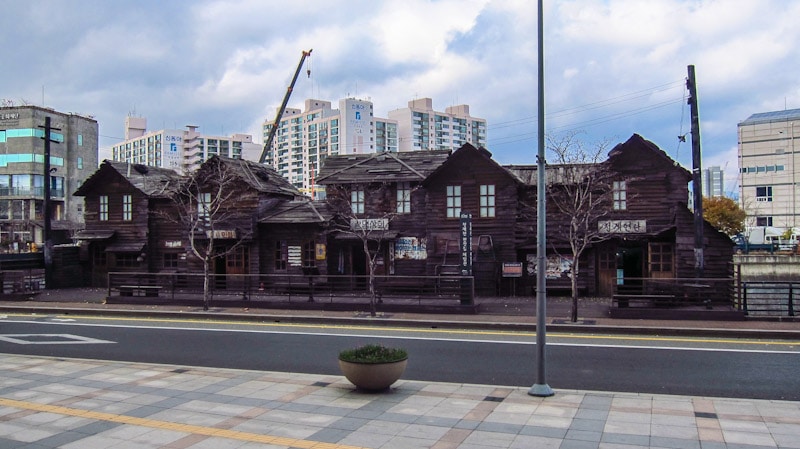
Across the road, detached from the museum, is an area known as the Experience Zone. This zone features a life size reproduction of a village with homes and shops that would have been found on the banks of the Cheonggyecheon Stream in the years after the Korean War. Visitors here can also find small stores that feature multiple artifacts that date back to this time period.
Cheonggyecheon Museum Information
Hours
Tuesday: 9:00 AM – 6:00 PM
Wednesday: 9:00 AM – 6:00 PM
Thursday: 9:00 AM – 6:00 PM
Friday: 9:00 AM – 6:00 PM
Saturday: 9:00 AM – 6:00 PM
Sunday: 9:00 AM – 6:00 PM
Admission
Free
Address
530 Cheonggyecheon-ro, Seongdong-gu, Seoul, South Korea
GPS Coordinates: 37.571343,127.035051
Map
Additional Resources
Klook
Klook offers discounted tickets and reservations for attractions and services in Seoul—from theme parks and museums to tours and transportation.
Viator by TripAdvisor
Book tours, activities, and unique experiences in Seoul—from sightseeing to cultural events and outdoor adventures—offered by local providers.
Rakuten
Save with cashback on hotels and travel services. Sign up and you could earn $30 cashback on your first purchase over $30.
Book Recommendations
Prefer a physical guide? Fodor’s Seoul offers detailed recommendations, maps, and travel tips for the city.
Nearby Sights
Seoul Yangnyeong Oriental Medicine Market
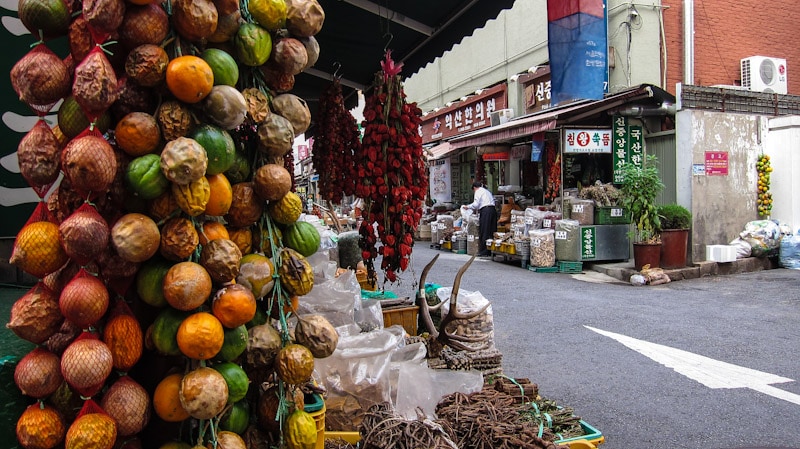
Seoul Yangnyeong Oriental Medicine Market is one of the largest and most unique herbal medicine and ginseng markets in Korea. It dates back to 1960, only a few years after the Korean War. Today, it supplies the country with almost…
Seoul Folk Flea Market
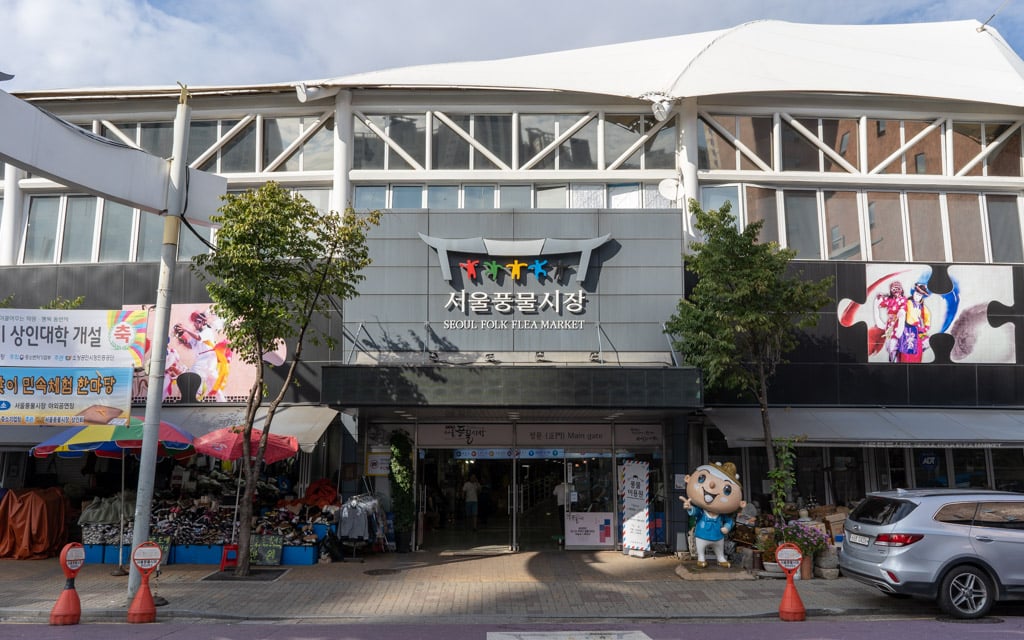
The Seoul Folk Flea Market is a vibrant indoor flea market where you can find traditional and modern Korean folk items including clothes, tools, and food. Almost anything you can think of is sold here including new, old, rare, and…
Dongmyo Shrine
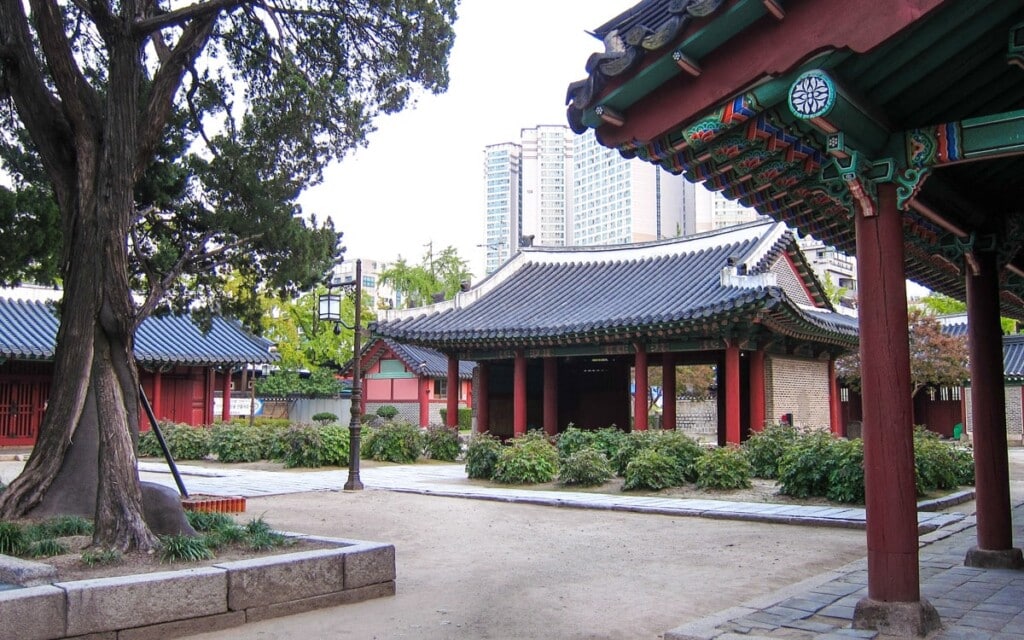
Dongmyo Shrine is a shrine where ancestral sacrifices to the Chinese military commander Guan Yu were performed. It is also known as Seoul Donggwanwangmyo, which means Gwanwangmyo in the east of Seoul. Guan Yu, who died in 219, was a…
Seoul Central Market
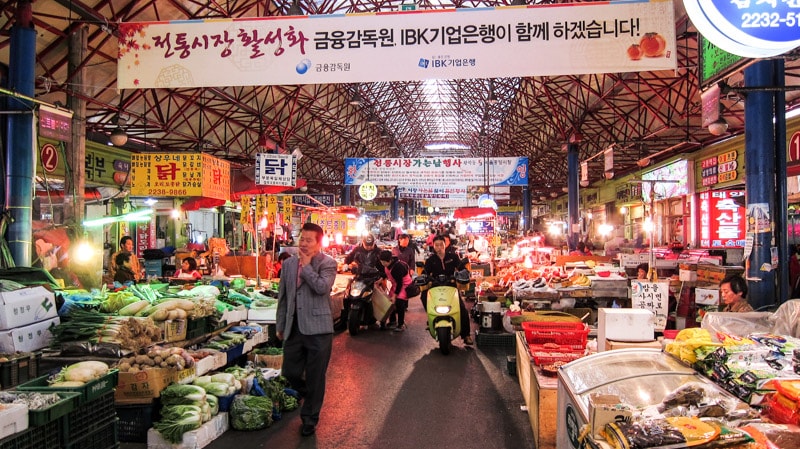
Seoul Central Market, also known as Seoul Jungang Market, is a traditional market located east of Heunginjimun Gate (Dongdaemun) that specializes in dried fish and other seafood. The market dates back to 1957, a few years after the Korean War.…
Last Updated on Dec 4, 2025

